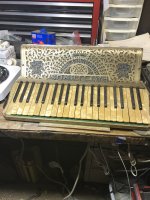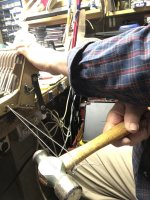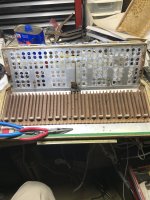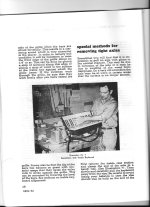32251
Active member
I got this for very cheap just because I liked the classic look of it, it’s all there with original case and it’s actually in good physical shape. Check out the “P-F” meter on the front. Has 4 Reed banks on the treble side 3 on the bass. Bellows and bass section are good. I’m thinking about giving it some love, but I would like to know sound wise if it’s worth a lot of my work invested. I’m not concerned about time vs value, but I would be interested in how it might sound if anyone has an opinion from hearing one. What would be an age guesstimate? Thanks









